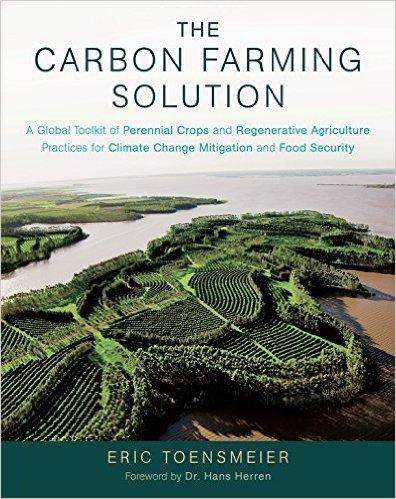
 3
3













Dale Hodgins wrote:Burra, am I correct in assuming that you didn't write all of that? It seems like something that could be printed on the inside cover. ☺
It looks like a really good book. I'm going to ask the library to buy it for me, oops I mean for everybody.
How permies.com works
What is a Mother Tree ?

 1
1




"Instead of Pay It Forward I prefer Plant It Forward" ~Howard Story / "God has cared for these trees, saved them from drought, disease, avalanches, and a thousand tempests and floods. But he cannot save them from fools." ~John Muir
My Project Page




How permies.com works
What is a Mother Tree ?
 1
1




Seeking a long-term partner to establish forest garden. Keen to find that person and happy to just make some friends. http://www.permies.com/t/50938/singles/Male-Edinburgh-Scotland-seeks-soulmate
 1
1





500 copies of The Carbon Farming Solution arrived in my driveway today, fresh off the presses! You can order one at carbonfarmingsolution.com if you like.
How permies.com works
What is a Mother Tree ?




How permies.com works
What is a Mother Tree ?
 1
1




How permies.com works
What is a Mother Tree ?
 1
1




How permies.com works
What is a Mother Tree ?




Best luck: satisfaction
Greatest curse, greed




Best luck: satisfaction
Greatest curse, greed
 1
1








Best luck: satisfaction
Greatest curse, greed
 2
2











 1
1




Best luck: satisfaction
Greatest curse, greed
 1
1




Seeking a long-term partner to establish forest garden. Keen to find that person and happy to just make some friends. http://www.permies.com/t/50938/singles/Male-Edinburgh-Scotland-seeks-soulmate
 2
2















R Ranson wrote:I just got my copy too. It's fantastic!
Seeking a long-term partner to establish forest garden. Keen to find that person and happy to just make some friends. http://www.permies.com/t/50938/singles/Male-Edinburgh-Scotland-seeks-soulmate




Neil Layton wrote:Rather than reviews is this one worth discussing as a read-through rather than reviews?
R? Burra? Anyone?
I mean, there is so much here, and so many issues raised, that I think it's worth talking about rather than just raving about.
How permies.com works
What is a Mother Tree ?




Neil Layton wrote:
R Ranson wrote:I just got my copy too. It's fantastic!
Is this one worth discussing as a read-through rather than reviews?
R? Burra? Anyone?
I mean, there is so much here, and so many issues raised, that I think it's worth talking about rather than just raving about.
(Edited for crap sentence structure. More coffee or more sleep...)











R Ranson wrote:
Would it be like a read-a-long? We read a little bit, chat about our thoughts (benefits, challenges, how it can be applicable in our local settings, &c)
Would we start a new thread, or stick it on this one?
How permies.com works
What is a Mother Tree ?




Seeking a long-term partner to establish forest garden. Keen to find that person and happy to just make some friends. http://www.permies.com/t/50938/singles/Male-Edinburgh-Scotland-seeks-soulmate




Burra Maluca wrote:
Neil Layton wrote:Rather than reviews is this one worth discussing as a read-through rather than reviews?
R? Burra? Anyone?
I mean, there is so much here, and so many issues raised, that I think it's worth talking about rather than just raving about.
Why not both?
Start off reading it through and give a review, then we can start thinking about a read-through. Maybe the main thing to consider is when to start. I think people should be given enough time to think about it and then get their own copies of the book. What time of year is best? How much space between chapters? One a week, or fortnight, or what?











Neil Layton wrote:
Anyway, I'm on page 17, and I already have discussion material for a review that would get me into a 4-figure word count.
I can bring a review under some sort of control if, and probably only if, I take some of the discussion material elsewhere.
How permies.com works
What is a Mother Tree ?















Seeking a long-term partner to establish forest garden. Keen to find that person and happy to just make some friends. http://www.permies.com/t/50938/singles/Male-Edinburgh-Scotland-seeks-soulmate




Best luck: satisfaction
Greatest curse, greed




Best luck: satisfaction
Greatest curse, greed




Seeking a long-term partner to establish forest garden. Keen to find that person and happy to just make some friends. http://www.permies.com/t/50938/singles/Male-Edinburgh-Scotland-seeks-soulmate















How permies.com works
What is a Mother Tree ?




Seeking a long-term partner to establish forest garden. Keen to find that person and happy to just make some friends. http://www.permies.com/t/50938/singles/Male-Edinburgh-Scotland-seeks-soulmate
 3
3




Our Microgreens: http://www.microortaggi.it
 1
1















R Ranson wrote:For the Carbon Farming Solution read-a-long, the proposal is:
Start on May 16th (but maybe we could have a discussion about the introduction before that to whet people's appetites)
One section every two weeks.
I'm thinking this date because it's a day without an author event. Author events happen roughly every two weeks... so... if we do the read-a-long on the 'off weeks' we can focus more attention on the book.
If any of that made sense. I'm a bit frazzled today and possibly have heat stroke. Just came in for a drink of water.











Best luck: satisfaction
Greatest curse, greed

|
Is that almond roca? Did you find it in the cat box? What is on this tiny ad?
Learn Permaculture through a little hard work
https://wheaton-labs.com/bootcamp
|








